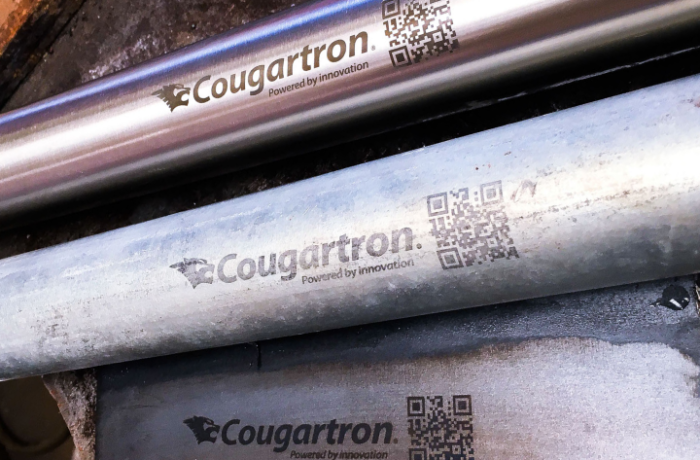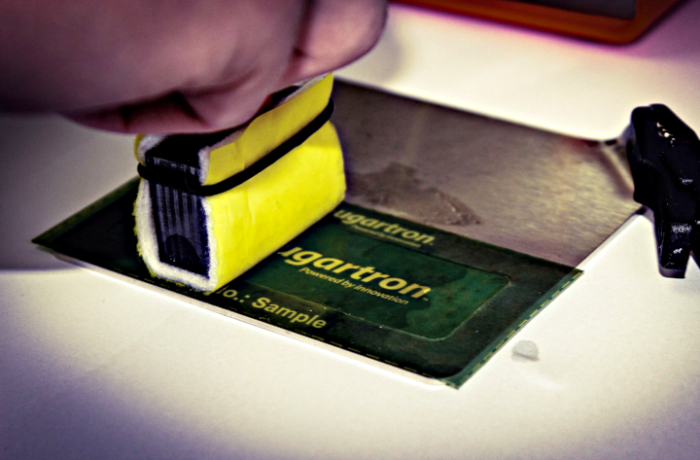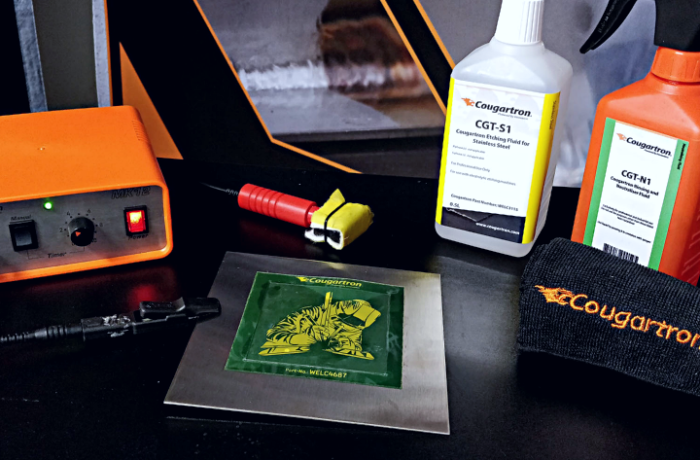Metal Marking Methods – Full Overview
Marking & Etching | Tuesday, 23 April 2019
Metal Marking Methods - Comparison
The profitability of your business depends largely on choosing the right equipment for your production and utilizing the appropriate working methods. This applies to all industrial activities, including metal marking.
With the vast number of available techniques and commercial solutions, it is very difficult to choose the right one that will maximize your results and improve your bottom line.
Therefore, we have decided to provide an overview of the major marking methods, hoping to help you in optimizing your production and reducing your expenses.
So, let’s jump right in.
Understanding the specifics of your production
Before we begin to describe different marking methods, it is important that you first understand the requirements of your production.
As we have already described here, a good start is to answer the following questions:
- Equipment portability and usage – Will you require a portable machine that can be moved around easily and used on-site?
- Material type – Do you need to mark/etch metal only?
- Cost – How much money are you ready to invest in the equipment?
- Functionality– Do you need to etch, mark, or both?
- Quality– Are high-resolution mark and etch results desirable in your line of work?
- Speed – Is speed a relevant factor to your production?
Answering them is the first step in understanding the benefits (and flaws) of different marking and etching methods.
Please note: that we use terms such as ‘marking’ and ‘etching’ quite often to describe two similar processes. If you want to know more about what differentiates them, please click here.
Overview of different marking methods
- Electrochemical marking
The popularity of the electrochemical marking technology is closely related to its versatility and flexibility.
Since the process is fueled by electricity and mild electrolytes (marking fluids), this marking method is suitable only for conductive metal surfaces. However, this covers a wide range of different metals and electrically conductive surfaces, including stainless steel, aluminum, brass, mild steel, and titanium to name a few.

Electrolytic marking equipment is affordable and not associated with high maintenance costs.
The marking machines are portable and compact which comes as a real benefit given the clear and permanent marking results they provide.
But is there a catch?
Although practical, electrolytic marking is still a manual process. Therefore, it is probably not the right choice if you are dealing with high-scale serial production where computer-controlled systems can secure more benefits.
- Laser marking
Laser marking is an effective method that owes its success to technological progress.
Unlike the electrochemical method, laser marking is suited to serial production since the equipment used is mostly stationary and not controlled by hand.
The technique is usable on various materials including metal and plastics. However, in order to achieve desirable and consistent results, it is necessary to allocate a significant amount of financial resources for the purchase of quality equipment.
If we add infrastructural constraints to the equation, it is quite clear why this marking method is not suitable for most small-to-medium businesses or low volume requirements
- Dot Peen marking
Dot peen marking is different from the above-mentioned methods in that it includes a stronger contact between the equipment and the metal surface.
In fact, it is questionable whether this process can be labeled as marking since it is much more similar to engraving.
The name of the method is partially derived from a dotted pattern that is left on the surface via a special marking head, better known as a ‘stylus’.
Dot peen(ing) is preferably used only on thicker metal surfaces due to the nature of the process.
- Inkjet marking
Inkjet marking is basically a customized printing process that results in semi-permanent marks on the metal (and plastic) surface.
It is possible to achieve high-resolution marking results using inkjet marking machines but you have to be careful when choosing your equipment.
Labels created using this technique are the least resistant to external influences and are therefore quite prone to fading. The pressurized ink is responsible for changing the color of the surface but it does not significantly affect the microstructure of the base metal.
Summary - pros and cons of each method
If we refer back to the requirements of your production, here is what follows from our analysis of different marking methods.
- Equipment portability and usage – Will you require a portable machine that can be moved around easily and used on-site?
Although there are mobile versions of laser, dot peen, and inkjet marking machines, they are all sacrificing some of the output quality for portability. Electrolytic marking equipment is the only one that provides top performance while at the same time being designed for more flexible production.
- Material type – Do you need to mark/etch metal only?
Laser and inkjet techniques can be used on metal and plastics while the other two methods are limited only to metal surfaces.
- Cost – How much money are you ready to invest in the equipment?
Taking all into account, the electrochemical equipment requires the least investment. In contrast, laser machines are the most expensive. Dot peen and Inkjet markers are in the middle of the price spectrum.
- Functionality– Do you need to etch, mark, or both?
Electrochemical and laser machines are capable of both marking (imprinting) and etching (incising). The inkjet method is only suitable for marking while the end result of dot peen(ing) is the most similar to engraving.
- Quality– Are high-resolution mark and etch results desirable in your line of work?
Only two of these methods promise high-quality and high-resolution permanent results on metal surfaces – electrochemical and laser marking. Inkjet marking can also provide precise and clear results, which, admittedly, are not as durable. The dot peen process is the least accurate of all these techniques.
- Speed – Is speed a relevant factor to your production?
Apart from the dot peen method, all other techniques are quite fast. There are always nuances associated with the quality of the equipment and your approach to work but quick results are rarely absent.
Do you need more information?
All of the mentioned methods are related to a number of advantages and disadvantages as there is no one-size-fits-all approach when it comes to professional metal processing.
However, we hope that our analysis will help you to move in the right direction when choosing a suitable marking solution for your production.
If you need help or more information, feel free to fill out the form below to contact us.
Loading...
Please wait while the form loads.
Popular Cougartron marking equipment
Loading products...
Please wait while the products load.


